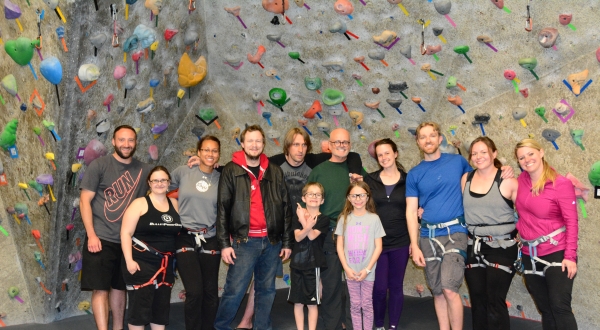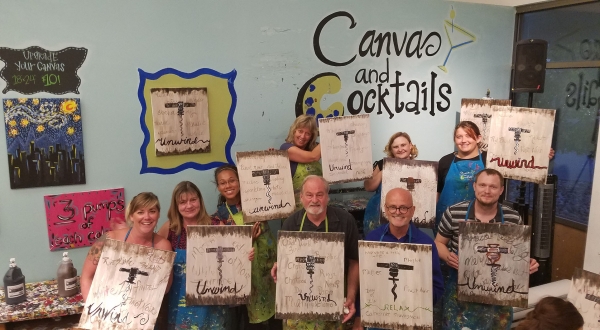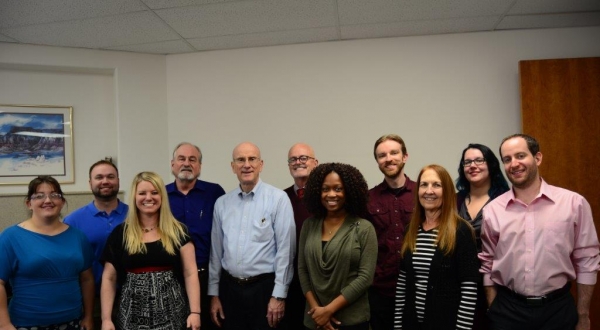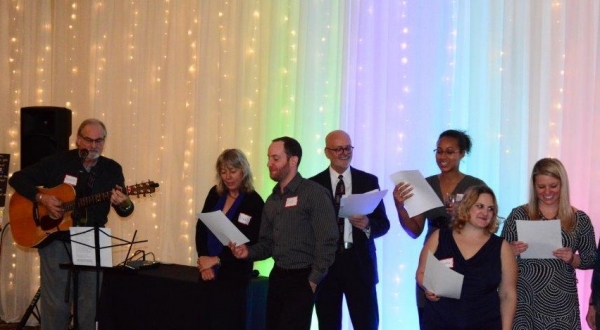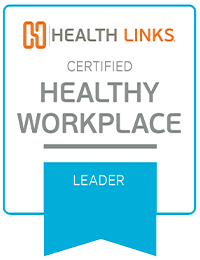
Why did your business decide become a Health Links Certified Healthy Business?:
MINES & Associates strives to bring wellness and mental health assistance to our clients and community. With our focus on helping our clients be healthy- both as an organization and as individuals- it was a no brainer to join Health Links. MINES is always looking for ways to collaborate and partner with like-minded organizations that promote the same ideals. Last year we were a healthy Business Partner and now it is exciting to see how much difference a year can make as we continue to focus on the safety and wellbeing of our employees. Ultimately, healthy employees are happier employees, as well as being more productive.
What benefits did the Certification bring to your business?:
Having the certification stating that MINES is a healthy business helps bring awareness to those we do business with that we take wellness in the workplace seriously, and “practice what we teach” promoting a consistent wellbeing focus both internally and externally. Additionally, the certification acts as a badge of pride for our company and has allowed our wellness committee to look at our internal wellness promotion differently.
How has this Certification changed the way your business thinks about health promotion and safety?:
We have refined the ways that we analyze the ideas and wellness methodology that we promote to our clients to help improve their own engagement with wellness initiatives as well as health and safety promotion. This helps us strategize how we can apply those same principles within our own organization, and in turn enhance our understanding of wellness principles to help us deliver better and more consistent wellbeing services supported by our experience.
How has your employee health and safety program given back to your community?:
We have been able to use what we have learned within our own company to help improve how we serve our clients and community. As we continue to calibrate our company culture in the wellness realm it has created a sense of personal accountability and pride which drives an enhanced passion to help others achieve the same. In fact, we have several health champions who have initiated efforts to use our skills and knowledge at Community Health Fairs and various organizations. Our program is a great starting off point to support causes that are health and safety related and we have begun to include more community based services and volunteer efforts into our future planning.
ORIGINAL STORY:
Why is the health and safety of your employees important to you?
MINES & Associates promotes health and wellbeing to our clients through the services we offer as well as through community efforts. It only makes sense to promote those same ideals internally to our staff and to try and create a place that’s healthy and safe to work in. We think about wellness holistically whether it be psychological, physical, financial, etc. All of the factors of a person’s health are important to us. We have a very tight-knit group and we also have strong support from our CEO. He regularly checks in with staff members about their individual health and safety goals and he takes pride in keeping our workplace safe. We haven’t had a worker’s comp claim in over 14 years, and only 2 in the 35 years we have been in business! Ultimately, healthy employees are happier employees.
What does your workplace health and safety program look like? Do you offer both components to employees?
We have a dedicated safety officer who has been working to formalize a lot of our programs. In the past, a lot has been more informal since we are a very conscientious group but moving forward we plan to formalize a bit more and start documentation processes to make it easier for employees to acclimate to our safety standards. As a psychology firm, we have little exposure to safety issues. One risk we have in our office is potential injury due to lifting heavy packages we receive so a lot of our focus with the safety program is proper lifting techniques. Wellness is a newer aspect for us. Our staff members have set personal goals for themselves and our CEO regularly checks in on the status of the goals and offers support to those employees. Some goals we’ve seen are drinking a certain amount of water per day, physical activity, walking and nutrition goals, and one employee even set a screen time goal for himself to limit his use of communication devices. We’ve also done ‘Olympics’ in our office to spark some interests and we regularly do social outings with our staff. We have a murder mystery dinner coming up and we’ve also done canvas and cocktails. We’ve found that there is more interest in programming this time around because everyone has created their own unique goals and we all support one another.
How will you/do you know your program is successful?
We track our successes through the use of SMART goals with an AIM component to help us determine if we’re in the goal range we set for ourselves. SMART stands for specific, measureable, achievable, reasonable, and time-bound, while AIM stands for acceptable, middle, or ideal in terms of tracking the outcome data related to the goal, which is set ahead of time. At the end of our goal periods, we talk about the strengths and weaknesses we encountered and determine what we can do in the future to be more successful. We have monthly check-ins and support each other in and out of the office. Mainly, we’re successful because it’s individual people competing with themselves to be better, not competing with other staff members.
What obstacles did you have to overcome to get your program started? How did you overcome them?
In the past when we have tried to implement these types of programs, we had staff members who just weren’t interested in participating. Now, we have a staff that really cares about this program and they want to participate and have a hand in creating the programming. This time around, we started out doing really fun things to get people involved and we also have improved messaging from our company leaders. We have seen more participation from them, resulting in more participation from staff. We also give staff members the opportunity to lead trainings on topics of their choosing such as meditation, ergonomics, nutrition, etc. We have a very talented workforce and many experts in different areas. Employees have brought their outside interests into the workplace to share with others and that has been really well received.
Does your health and safety program help give back to your community?
We participate in a number of community events. We host food and coat drives, many staff members hold community leadership positions with organizations like the American Diabetes Association and Rocky Mountain Communities, and staff members can volunteer at the organization of their choice. Many of our employees have the ability to participate in all of these things on company time, which really allows them the freedom to follow their passions without time constraints standing in the way.
What tip/advice would you give to a business that is considering starting a workplace health and safety program?
The biggest tip is to listen to employees and see what they want their program to look like and then give them a hand in creating it so they are motivated and excited to participate. You also have to have patience because it can be really frustrating and time-consuming to get a program off the ground. You’ll have staff members leave your wellness committee and you’ll have employees who aren’t willing to participate but it helps when you set small, achievable goals to help you gain momentum. It’s also a big help when leadership is proactively taking an interest in employees’ individual wellness goals and participating in the program. The message and engagement from the top is key. It’s helped us to make wellness a standing agenda item during our all-staff meetings so all employees can hear what’s going well and what the committee needs help with. As we are a smaller employee group, the above strategies are helpful. If we were a larger employee group we would recommend tying wellness goals to actual measurable health outcomes while paying close attention to the behavioral economics of participation.
